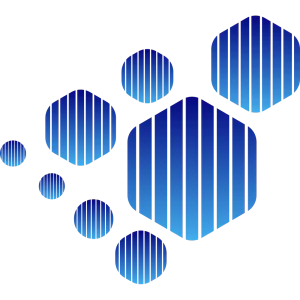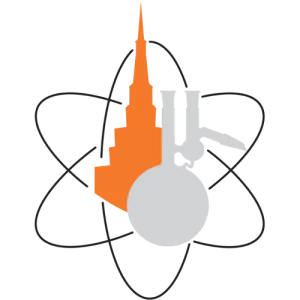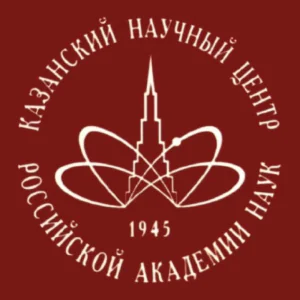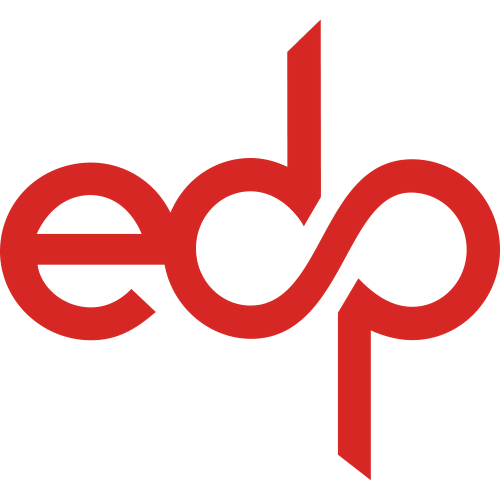Material Solubility-Photovoltaic Performance Relationship in the Design of Novel Fullerene Derivatives for Bulk Heterojunction Solar Cells
Pavel A. Troshin
1
,
Harald Hoppe
2
,
Joachim Renz
2
,
Martin Egginger
3
,
Julia Yu Mayorova
1
,
Andrey E Goryachev
1
,
A. S. Peregudov
4
,
Rimma N. Lyubovskaya
1
,
Gerhard Gobsch
2
,
N. Serdar Sariciftci
3
,
Vladimir F. Razumov
1
2
Technical University Ilmenau, Institute of Physics Weimarer Str. 32 Ilmenau, 98693 (Germany)
|
Publication type: Journal Article
Publication date: 2009-03-10
scimago Q1
wos Q1
SJR: 5.439
CiteScore: 27.7
Impact factor: 19.0
ISSN: 1616301X, 16163028
Electronic, Optical and Magnetic Materials
Electrochemistry
Condensed Matter Physics
Biomaterials
Abstract
The preparation of 27 different derivatives of C60 and C70 fullerenes possessing various aryl (heteroaryl) and/or alkyl groups that are appended to the fullerene cage via a cyclopropane moiety and their use in bulk heterojunction polymer solar cells is reported. It is shown that even slight variations in the molecular structure of a compound can cause a significant change in its physical properties, in particular its solubility in organic solvents. Furthermore, the solubility of a fullerene derivative strongly affects the morphology of its composite with poly(3-hexylthiophene), which is commonly used as active material in bulk heterojunction organic solar cells. As a consequence, the solar cell parameters strongly depend on the structure and the properties of the fullerene-based material. The power conversion efficiencies for solar cells comprising these fullerene derivatives range from negligibly low (0.02%) to considerably high (4.1%) values. The analysis of extensive sets of experimental data reveals a general dependence of all solar cell parameters on the solubility of the fullerene derivative used as acceptor component in the photoactive layer of an organic solar cell. It is concluded that the best material combinations are those where donor and acceptor components are of similar and sufficiently high solubility in the solvent used for the deposition of the active layer.
Found
Nothing found, try to update filter.
Found
Nothing found, try to update filter.
Top-30
Journals
|
5
10
15
20
25
30
35
|
|
|
Journal of Materials Chemistry A
35 publications, 10.29%
|
|
|
Journal of Physical Chemistry C
16 publications, 4.71%
|
|
|
Solar Energy Materials and Solar Cells
14 publications, 4.12%
|
|
|
Journal of Materials Chemistry C
12 publications, 3.53%
|
|
|
Advanced Energy Materials
12 publications, 3.53%
|
|
|
ACS applied materials & interfaces
12 publications, 3.53%
|
|
|
RSC Advances
10 publications, 2.94%
|
|
|
Advanced Functional Materials
8 publications, 2.35%
|
|
|
Physical Chemistry Chemical Physics
7 publications, 2.06%
|
|
|
Chemical Communications
6 publications, 1.76%
|
|
|
Synthetic Metals
6 publications, 1.76%
|
|
|
Organic Electronics
6 publications, 1.76%
|
|
|
Chemistry of Materials
6 publications, 1.76%
|
|
|
New Journal of Chemistry
6 publications, 1.76%
|
|
|
Journal of Polymer Science, Part B: Polymer Physics
5 publications, 1.47%
|
|
|
ChemSusChem
4 publications, 1.18%
|
|
|
Macromolecules
4 publications, 1.18%
|
|
|
Thin Solid Films
3 publications, 0.88%
|
|
|
Mendeleev Communications
3 publications, 0.88%
|
|
|
Langmuir
3 publications, 0.88%
|
|
|
Journal of Chemical Physics
3 publications, 0.88%
|
|
|
Materials
3 publications, 0.88%
|
|
|
Polymer
3 publications, 0.88%
|
|
|
Tetrahedron
3 publications, 0.88%
|
|
|
Nano Energy
3 publications, 0.88%
|
|
|
Advanced Materials
3 publications, 0.88%
|
|
|
Angewandte Chemie
3 publications, 0.88%
|
|
|
Angewandte Chemie - International Edition
3 publications, 0.88%
|
|
|
Journal of Polymer Science, Part A: Polymer Chemistry
3 publications, 0.88%
|
|
|
5
10
15
20
25
30
35
|
Publishers
|
10
20
30
40
50
60
70
80
90
|
|
|
Royal Society of Chemistry (RSC)
89 publications, 26.18%
|
|
|
Wiley
69 publications, 20.29%
|
|
|
American Chemical Society (ACS)
55 publications, 16.18%
|
|
|
Elsevier
54 publications, 15.88%
|
|
|
Springer Nature
14 publications, 4.12%
|
|
|
AIP Publishing
6 publications, 1.76%
|
|
|
MDPI
6 publications, 1.76%
|
|
|
Pleiades Publishing
5 publications, 1.47%
|
|
|
OOO Zhurnal "Mendeleevskie Soobshcheniya"
3 publications, 0.88%
|
|
|
Beilstein-Institut
3 publications, 0.88%
|
|
|
Taylor & Francis
3 publications, 0.88%
|
|
|
EDP Sciences
2 publications, 0.59%
|
|
|
The Electrochemical Society
2 publications, 0.59%
|
|
|
IOP Publishing
2 publications, 0.59%
|
|
|
Portico
2 publications, 0.59%
|
|
|
IGI Global
2 publications, 0.59%
|
|
|
Institute of Electrical and Electronics Engineers (IEEE)
2 publications, 0.59%
|
|
|
Hindawi Limited
2 publications, 0.59%
|
|
|
Annual Reviews
2 publications, 0.59%
|
|
|
Georg Thieme Verlag KG
2 publications, 0.59%
|
|
|
SAGE
1 publication, 0.29%
|
|
|
Oxford University Press
1 publication, 0.29%
|
|
|
The Society of Synthetic Organic Chemistry, Japan
1 publication, 0.29%
|
|
|
Autonomous Non-profit Organization Editorial Board of the journal Uspekhi Khimii
1 publication, 0.29%
|
|
|
Korean Society of Industrial Engineering Chemistry
1 publication, 0.29%
|
|
|
Optica Publishing Group
1 publication, 0.29%
|
|
|
American Institute of Mathematical Sciences (AIMS)
1 publication, 0.29%
|
|
|
Allerton Press
1 publication, 0.29%
|
|
|
10
20
30
40
50
60
70
80
90
|
- We do not take into account publications without a DOI.
- Statistics recalculated weekly.
Are you a researcher?
Create a profile to get free access to personal recommendations for colleagues and new articles.
Metrics
340
Total citations:
340
Citations from 2025:
5
(1.47%)
Cite this
GOST |
RIS |
BibTex |
MLA
Cite this
GOST
Copy
Troshin P. A. et al. Material Solubility-Photovoltaic Performance Relationship in the Design of Novel Fullerene Derivatives for Bulk Heterojunction Solar Cells // Advanced Functional Materials. 2009. Vol. 19. No. 5. pp. 779-788.
GOST all authors (up to 50)
Copy
Troshin P. A., Hoppe H., Renz J., Egginger M., Mayorova J. Yu., Goryachev A. E., Peregudov A. S., Lyubovskaya R. N., Gobsch G., Sariciftci N. S., Razumov V. F. Material Solubility-Photovoltaic Performance Relationship in the Design of Novel Fullerene Derivatives for Bulk Heterojunction Solar Cells // Advanced Functional Materials. 2009. Vol. 19. No. 5. pp. 779-788.
Cite this
RIS
Copy
TY - JOUR
DO - 10.1002/adfm.200801189
UR - https://doi.org/10.1002/adfm.200801189
TI - Material Solubility-Photovoltaic Performance Relationship in the Design of Novel Fullerene Derivatives for Bulk Heterojunction Solar Cells
T2 - Advanced Functional Materials
AU - Troshin, Pavel A.
AU - Hoppe, Harald
AU - Renz, Joachim
AU - Egginger, Martin
AU - Mayorova, Julia Yu
AU - Goryachev, Andrey E
AU - Peregudov, A. S.
AU - Lyubovskaya, Rimma N.
AU - Gobsch, Gerhard
AU - Sariciftci, N. Serdar
AU - Razumov, Vladimir F.
PY - 2009
DA - 2009/03/10
PB - Wiley
SP - 779-788
IS - 5
VL - 19
SN - 1616-301X
SN - 1616-3028
ER -
Cite this
BibTex (up to 50 authors)
Copy
@article{2009_Troshin,
author = {Pavel A. Troshin and Harald Hoppe and Joachim Renz and Martin Egginger and Julia Yu Mayorova and Andrey E Goryachev and A. S. Peregudov and Rimma N. Lyubovskaya and Gerhard Gobsch and N. Serdar Sariciftci and Vladimir F. Razumov},
title = {Material Solubility-Photovoltaic Performance Relationship in the Design of Novel Fullerene Derivatives for Bulk Heterojunction Solar Cells},
journal = {Advanced Functional Materials},
year = {2009},
volume = {19},
publisher = {Wiley},
month = {mar},
url = {https://doi.org/10.1002/adfm.200801189},
number = {5},
pages = {779--788},
doi = {10.1002/adfm.200801189}
}
Cite this
MLA
Copy
Troshin, Pavel A., et al. “Material Solubility-Photovoltaic Performance Relationship in the Design of Novel Fullerene Derivatives for Bulk Heterojunction Solar Cells.” Advanced Functional Materials, vol. 19, no. 5, Mar. 2009, pp. 779-788. https://doi.org/10.1002/adfm.200801189.
Profiles





































